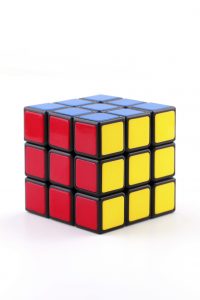On 10 November 2016 the inventors of the Rubik’s Cube lost their trade mark battle. However, all is not lost, as intellectual property is a puzzle itself and like Rubik’s Cube. Any business will need to piece together the jigsaw of different intellectual property protection.Then, they will be able to benefit from the protection it can offer.

Although intellectual property is often viewed as a key asset, there is no legal meaning of “intellectual property rights”. Instead, this is the term used to describe a range of rights that can exist. Most notably, many products or outputs may not just have one type of intellectual property right in them.
For example, Rubik’s Cube has lost its trade mark case in relation to the shape of the 3D conundrum. However, it can still benefit from other intellectual property rights. Such as other trade marks (including in the name) and copyright.
The most common types of intellectual property rights include:
• copyright – exists automatically in original literary, dramatic, musical or artistic works, for example in any notes, drawings, photography etc
• trade marks – can be used to protect brand names and logos
• patents – protect inventions
• design rights (unregistered) – automatically protects the shape or configuration (i.e. how different parts of a design are arranged together) of an object
•rRegistered design rights – protects both three-dimensional and two-dimensional designs, such as graphics and textiles
These are also covered in Blawg: Silence is Golden (or is it?)
The detail of each of these types of intellectual property right is outside the scope of this blawg as different intellectual property rights have different laws in relation to:
• the types of outputs they are able to protect
• who the owner of the intellectual property right in the output is
• how long the owner has to exploit the intellectual property rights in their outputs
• what you have to do to get the protection of the relevant intellectual property right– generally this happens in two ways; there can be automatic protection where the intellectual property right owner’s rights simply exist (e.g. copyright) and those that have to be registered (e.g. registered design rights, patents, etc).
However our Factsheet “Protecting IPRs in software” goes into more detail about the multiple layers of intellectual property protection right that can be found in software. Get in touch if you’d like us to send you a copy.
